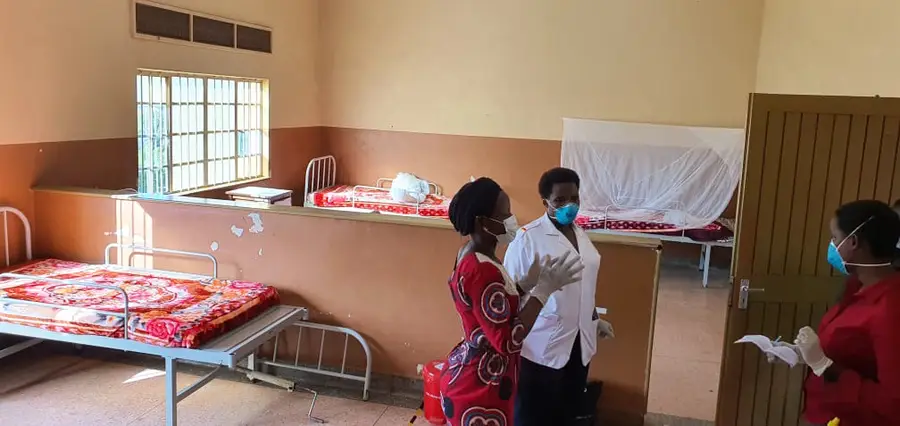
Access to health care can mean the difference between life and death. Yet, the health sector isn’t immune to corruption. Indeed, the new U.S. Strategy on Countering Corruption is clear that the issue of corruption cuts across all sectors.
In recent blogs, we explored the history of integrated governance and factors to use when selecting, designing, and implementing such programs. Now, we turn our attention to what integrated governance approaches look like in practice in the health care sector.
In this post, we explore how the Governance, Accountability, Participation and Performance (GAPP) project, co-funded by USAID and UKAID/FCDO, integrated an anti-corruption approach to improve health services. By examining the consequences of corruption on health outcomes, factors that led to this program’s success, and lessons learned, we gain insight into how we can move forward together as a development community to reduce health care corruption more effectively.
Defining the Problem: Corruption in the Health Sector
Health care corruption robs citizens of equal access to vital services, including denying them the right to quality health care. Corruption affects all dimensions of health care, from access to equity and efficacy. Each year, globally, more than $500 billion in health spending each year is lost to corruption and fraud – a particularly significant issue as COVID-19 stresses already-tight national health budgets.
The consequences of corruption in the health sector are literally life threatening. Child mortality is correlated more strongly with national corruption levels than with literacy, access to clean water, and even vaccination rates.
In Uganda, a 2018 study found that high-profile corruption scandals; underfunding that led to scarcity of services, drugs, and supplies; and low salaries for staff created conditions ripe for bribery. The country’s Health Monitoring Unit also noted that lack of costing standards for construction, lax procurement procedures and oversight, and weak accountability for inventory and vehicles were also problems that increased the risks of corruption.
Reducing Health Care Corruption Through Targeted Interventions
In 2017, USAID asked the GAPP program to expand its scope to support a request from the Ugandan government. The head of the Ministry of Health (MoH) had asked for U.S. support to strengthen accountability systems within the Ministry. The request aligned with Uganda’s strategic plan for improving health care, which provided additional opportunity for GAPP to address these issues.
The approach focused on reforms that would prevent health care corruption. Leaders in the MoH and project staff had recognized a preventative approach was more likely to yield sustainable results than curative models that identify and punish acts of corruption after they happen.
This meant strengthening key processes and practices for health system efficiency, which would reduce the opportunities and incentives people had to engage in corrupt behaviors. GAPP, in collaboration with the MoH leadership, prioritized improving accountability and quality control in auditing, procurement, legal guidance, financial management, and infrastructure development.
As a result, government funds that had previously gone unaccounted for dropped from $1.1 million in 2016/2017 to just $24,502 a year in 2017/2018. Cost savings and improvements in construction timelines meant the Ministry of Health was able to upgrade 12 additional health facilities and redirect more than $350,000 in savings to hospital infrastructure. And enhanced audit and procurement processes of 132 health centers in 10 districts led to a savings of $652,000.
Lessons Learned in Combatting Corruption in the Ugandan Health Sector
Throughout this blog series, we have noted the need for more research on integrated governance. As part of a larger internal research initiative at RTI to understand how integrating governance initiatives, such as anti-corruption, contribute to sectoral results, we conducted a case study of the success factors of the GAPP project.
This study highlighted the following factors, which practitioners should consider when designing similar integrated governance programs.
- Political will: Strong political support from top government leadership in Uganda, especially the health minister and Permanent Secretary, helped to push through reforms, even in the face of opposition.
- Messaging: Clear messaging from top leadership emphasized that certain corrupt practices had to end and that accountability for corrupt actions would increase.
- Donor Support: Strong financial and political support from USAID and the UK Foreign, Commonwealth & Development Office helped the Ugandan Ministry of Health implement reforms.
- Opportunity: The program took advantage of the window of opportunity opened by the health minister’s request to tackle specific, critical issues.
- Expertise: The technical expertise of the GAPP team enabled it to rapidly design and implement integrated governance solutions.
GAPP’s experience in this area also illuminated lessons learned for how to integrate an anti-corruption approach for a specific sector into a governance program. Future integrated governance programs could benefit from these emerging insights to ensure interventions are sustainable and impactful and prevent unintended consequences.
For donors, we conclude that:
- Anti-corruption interventions within sectors can be particularly fruitful to pursue as there are often very specific problems to focus on; addressing corrupt behaviors and activities has a real impact on peoples’ lives; and there may be more diffuse power dynamics within sectors than in higher-level corruption issues.
- Within the health sector, donors should support long-term, strategic approaches to integrity in the health sector at the national level, which includes focusing on how corruption undermines access, quality, equity, efficiency, and efficacy of health services.
We encourage practitioners to consider the following when designing anti-corruption interventions for a sector:
- Clearly identify the problem in the sector, which may require multiple analytical approaches. Defining how change will be measured from the outset is also critical.
- Account for the wider complex dynamics that lead to corrupt behavior. This may entail more deeply understanding the social norms that support corrupt actions or undermine anti-corruption efforts and how corruption may play a functional role for citizens.
- Seize on windows of opportunity within a sector to target specific corruption problems where solutions can have immediate, tangible impact on people’s lives. This can bolster more strategic-level systemic reforms.
Working Across Sectors to Promote Integrated Governance
There is no “one size fits all” approach to integrated governance programming, and there is still a lot to learn in this area. In some cases, placing anti-corruption approaches within a sector-specific program may work. In other cases, a general governance program may need to be adapted to focus on sector-specific problems as they can often more rapidly flex and adapt to windows of opportunity.
Development practitioners should consider which programmatic approach would be most effective after clearly identifying the problem, opportunity, and wider dynamics of a given context.
All sectors can learn from each other about what the most effective approaches to integrated governance are. Governance and anti-corruption practitioners can learn a great deal from health practitioners’ learning on social and behavior change approaches. Those working on climate change can learn from effective anti-corruption approaches as many sectors critical to addressing climate change are known for their corruption risks.
The starting point is a common vocabulary and understanding about what corruption is and why it is happening in a particular time and place. The words we use matter. Practitioners should not shy away from talking directly about corruption issues. Using substitute language like “inefficiencies” or “combatting crime” in sectoral programs can lead to theories of change and approaches that may not actually reduce corruption.
Capturing and sharing evidence about what works and what doesn’t among all donors, governments, and implementing partners is also critical. It ensures that integrated approaches can be further refined and become increasingly effective. At RTI, we are committed to expanding the evidence base and learning on this topic to advance more effective and sustainable results.
Learn more about our integrated governance solutions.


